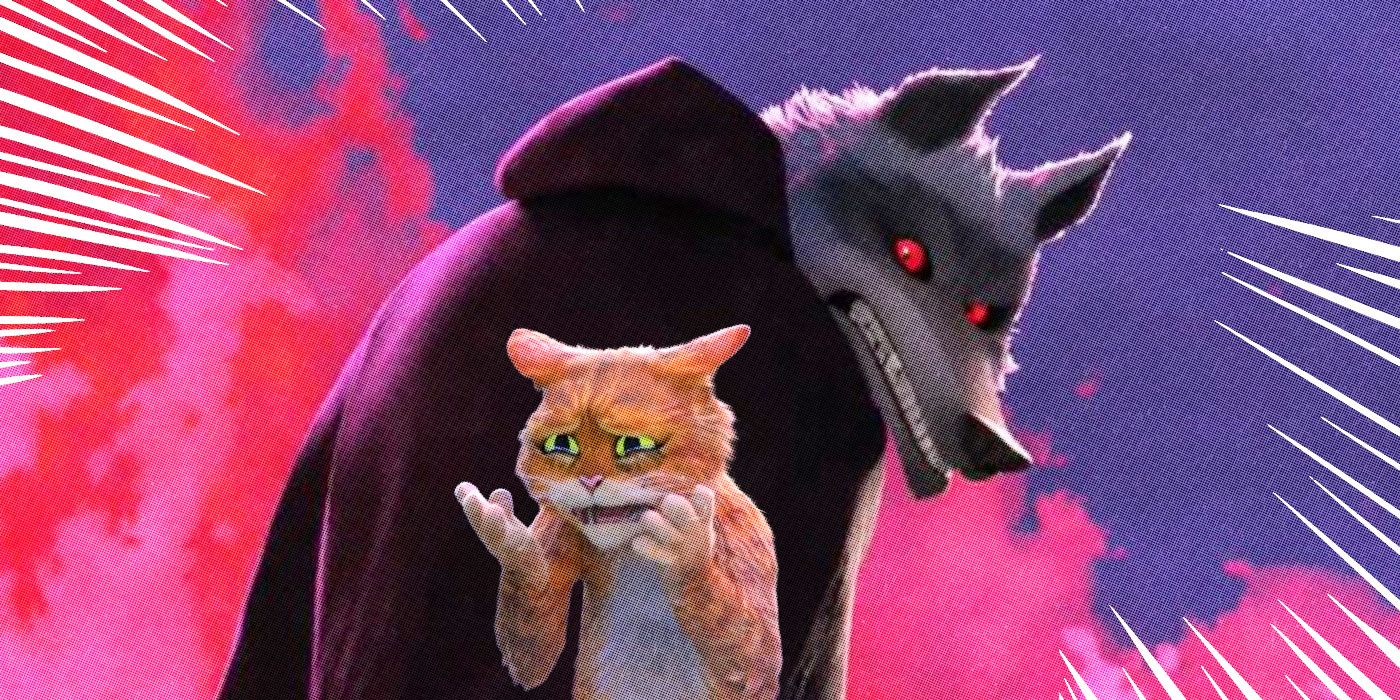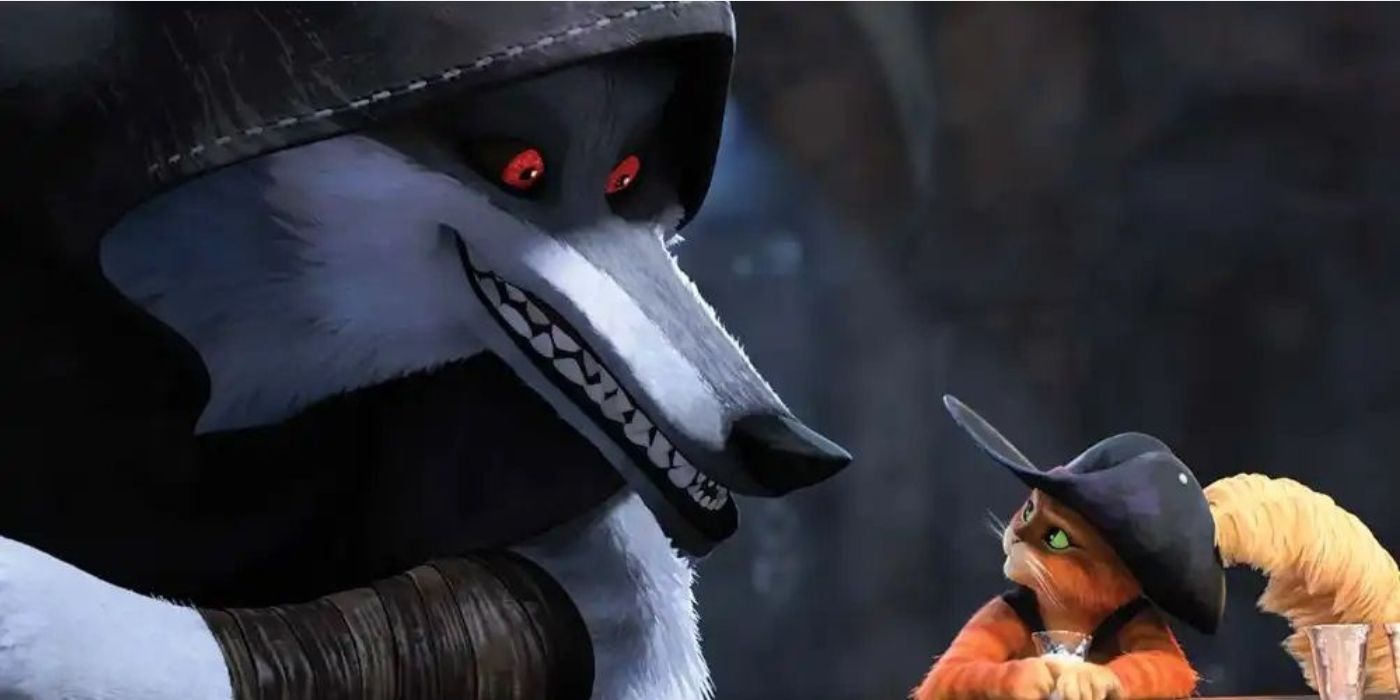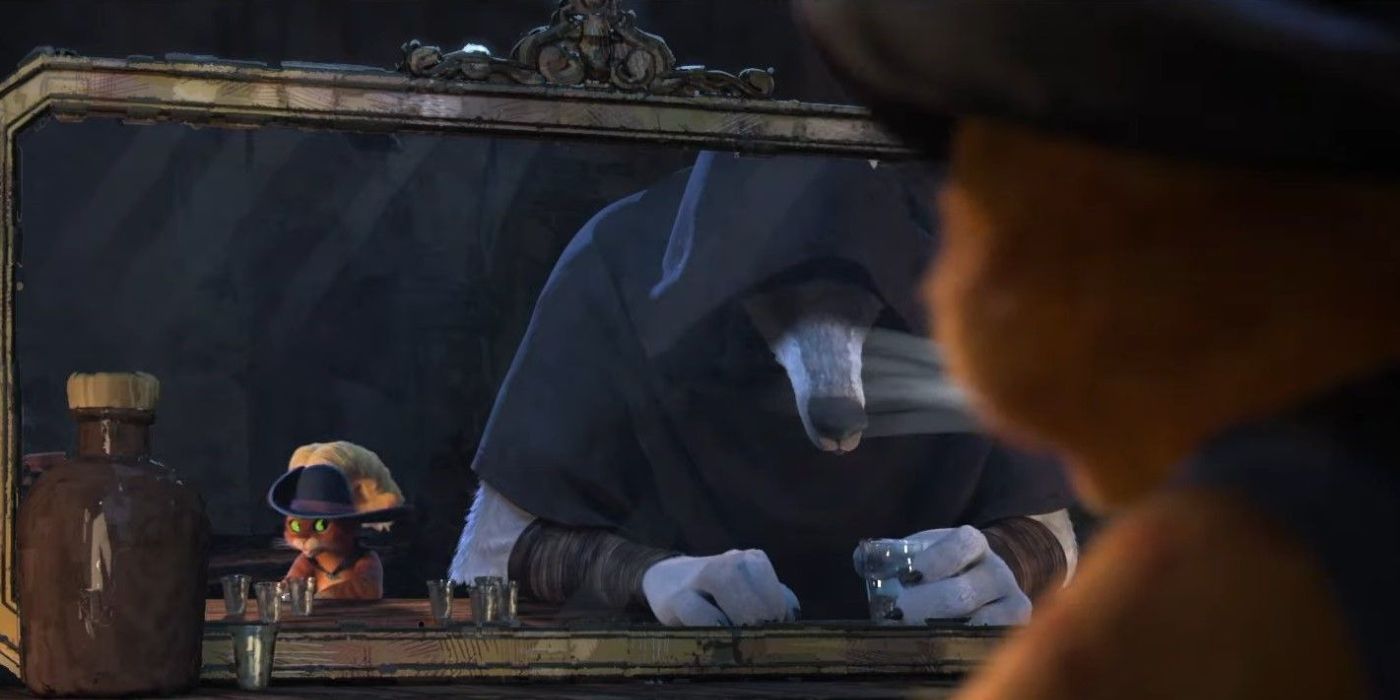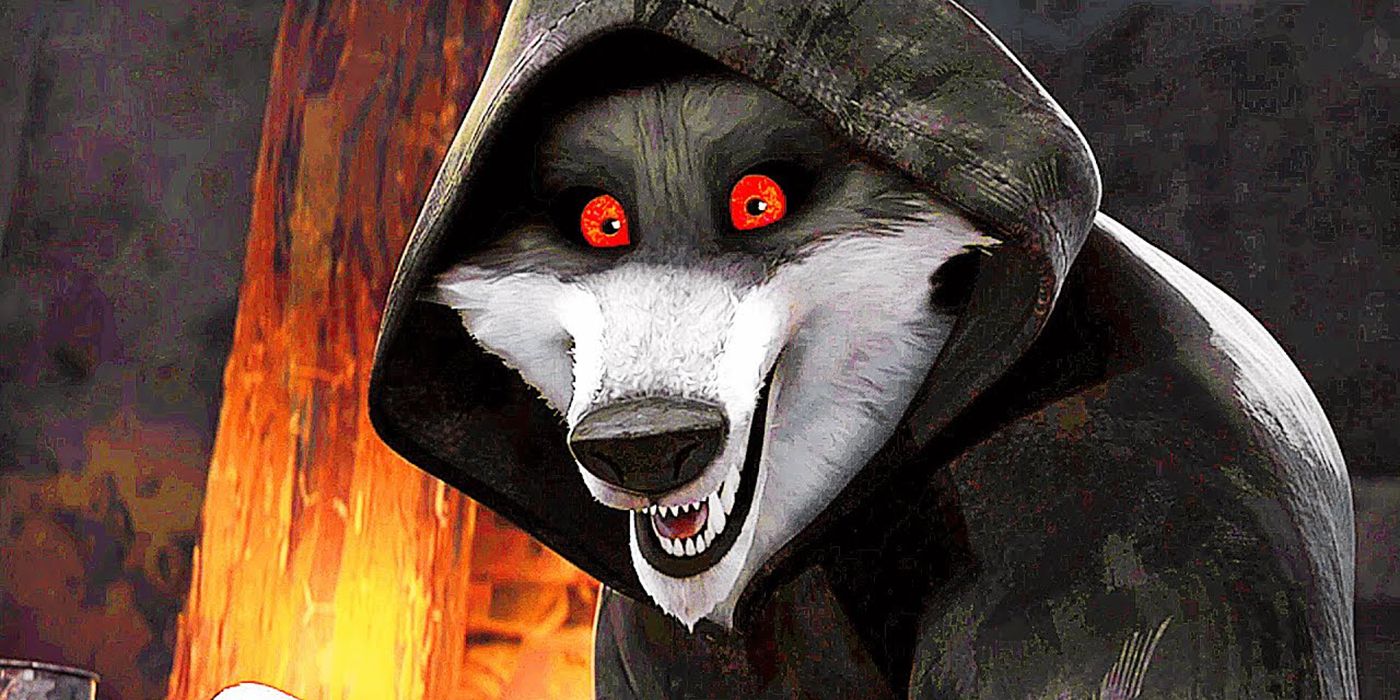Puss In Boots: The Last Wish has accomplished a difficult feat. It's not easy for a franchise that has been around for more than twenty years to find new life in a way that gets audiences excited about future installments. Especially in an era of countless legacy sequels, prequels, spinoffs, and extended universe builders, the idea of going back to a franchise that hasn't been touched since 2011 just sounds exhausting. That's why Puss In Boots: The Last Wish is such a novelty. Somehow, director Joel Crawford was able to take a mediocre spinoff in the Shrek-verse, and create an eye-popping, grounded, and overall fun sequel that has audiences practically begging for more Shrek movies.
DreamWorks took the animation in a bold new direction with Puss In Boots: The Last Wish, diverting from the visual style of previous Shrek movies and landing somewhere between Spider-Man: Into the Spider-Verse, Attack on Titan, and The Mitchells vs. the Machines. Bright colors, variable frame rates, and unique camera POVs certainly enhance the viewing experience, but what really makes Puss In Boots: The Last Wish special is the villain — a wolf, voiced by Wagner Moura with perfect diabolical flare.
The wolf is the literal personification of death. With a dark hood and two razor-sharp sickles for weapons, Death is hunting Puss because he took the first eight of his nine cat-lives for granted. His bright red eyes and haunting signature whistle send chills down Puss's spine and cause the fur to stand up on the back of his neck. This is what makes Death such an effective antagonist. Puss In Boots: The Last Wish is the first Shrek film to feature a villain who provokes genuine fear and vulnerability in the hero. Furthermore, Puss In Boots: The Last Wish does a spectacular job of showing exactly how Death breaks down Antonio Banderas' feline hero and forces true character development.
Death Raises the Stakes In 'Puss In Boots: The Last Wish'
In their first altercation in Puss In Boots: The Last Wish, Death literally makes Puss bleed. Blood is an incredibly rare sight in animated kids movies, so its presence does a lot to indicate the severity of the stakes. Until this point, Puss had considered himself immortal. Death forced him to realize — staring his mortality in the face — that he could no longer afford to be reckless with his well-being. Then, in complete defiance of everything the audience has known the character to be for four movies, Puss runs for his life.
Franchises (especially animated franchises with ties to theme parks) are usually hesitant to promote true character growth because it affects the way the character is marketed for merchandise, theme park attractions, and possible sequels. So it's refreshing when studios are willing to take risks by backing their characters against a wall that forces them to make fundamental changes to their personality. In Puss In Boots: The Last Wish, Death frightens Puss in a way that takes him into emotional places that have never been seen in this franchise — and it works!
The most notable example of this in Puss In Boots: The Last Wish is when Puss realizes that Death has followed him into the Black Forest. After laying eyes on the whistling wolf, Puss winds up under a tree, paw over his heart, hyperventilating. This becomes a crucial moment of character development both for Puss and for Perrito, the little dog voiced by Harvey Guillen. The panic attack (another rare phenomenon in kids movies) gives Perrito the opportunity to be the therapy dog he dreamed of becoming. It also puts Puss in a position of vulnerability that creates an empathetic relationship with the audience and provides a genuine, human obstacle that Puss must learn to overcome.
The chills, the blood, and the panic attack are important tools Puss In Boots: The Last Wish is using to establish high stakes. For the first time in a Shrek movie, it feels like the hero is actually in danger. While Lord Farquaad, Fairy Godmother, Prince Charming, Rumpelstiltskin, and Humpty Dumpty were each memorable villains for their respective reasons (good and bad), they all suffer from the same tendency to force a layer of goofiness over their wickedness. That formula might work fairly well for younger viewers, but it results in low stakes and forced conflict. While a degree of this exists in Puss In Boots: The Last Wish in John Mulaney's character, "Big" Jack Horner, Death remains grounded, focused, and purely menacing. Even his exclamation after his final battle with Puss, which translates in English to, "Why the hell did I have to play with my food?" keeps his character chillingly consistent.
Death Represents More Than Is Seen On the Screen In 'Puss In Boots: The Last Wish'
Death also works so well because he represents something bigger than his diegetic objective. Puss's fear of the wolf represents his fear of mortality. Because he only has one life left, he has to come to terms with how fragile his life really is and learn to make the most of it. In the final battle at the end of Puss In Boots: The Last Wish, Death disarms Puss, tears his cape and boots, and removes his hat. This symbolizes Puss's character being stripped down so that he can make the choice to give his life real value. This is the kind of elevated visual storytelling this franchise has been missing that pushes Puss In Boots: The Last Wish ahead of its predecessors. It makes the movie more universally accessible and meaningful to audiences because mortality is something everyone must eventually come to terms with.
Puss In Boots: The Last Wish may be the biggest surprise hit of 2022, boasting over $200 million at the global box office. While so much of its wild success can be attributed to the animation team and their bold new vision for visual style, on the story level, Death is what elevates Puss In Boots: The Last Wish above the rest of the Shrek-verse. Death is such an effective character because of the way he genuinely frightens Puss, the ways he raises the stakes of the movie, and the way he holds greater meaning beyond the context of the fairytale. Death's presence in Puss In Boots: The Last Wish paves the way for effective visual storytelling, real character development, and some fun-as-hell action sequences. The movie does a terrific job of presenting Death in a menacing way, focusing his objective, and grounding him so that he feels like a genuine threat throughout the movie. Hopefully, audiences can look forward to more movies in the Shrek-verse with this level of elevated storytelling, and more villains that do what Death did for Puss In Boots: The Last Wish.




